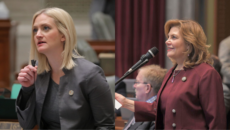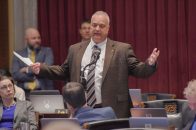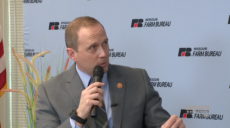State Auditor Nicole Galloway recently recommended improvements for St. Louis’ Tax Increment Financing (TIF) program after finding several issues with its approval process and transparency.
“TIFs can serve as a tool to help revitalize areas of our communities that badly need it,” Galloway said in the audit. “But strong guidelines and policies that control costs, provide transparency, and demonstrate need are necessary to protect taxpayers. It is the city’s responsibility to act on the side of taxpayers.”
The auditor suggested more consistent approval criteria, documentation, and adherence to the city’s established TIF cap.
“Because millions are diverted from schools and city services, it’s imperative the city get this right,” Galloway said.
Here’s a look at how TIF programs are meant to operate, according to Missouri statutes.
The state’s version of the program was established by a section of the Revised Statutes of Missouri, known as the TIF Act.
The practice is a public financing method used as a subsidy for redevelopment. In a TIF project, costs are funded through taxes generated by an increase in economic activity in a redeveloped area, along with property taxes. The taxes are diverted from other local taxing districts, including schools, to cover costs associated with redevelopment projects.
Funds can go toward land acquisition and demolition, building new utility infrastructures like sewer and lighting, relocation of residents in the area, and work such as surveying and financial management.
Missouri statutes require projects to identify as an improvement to a “blighted,” “conservation,” or “economic development” area for consideration.
Blighted areas are those that are considered a social liability due to inadequate street layouts, deterioration, or other conditions that could endanger life within the project area.
Conservation areas are those in which at least 50 percent of the buildings are more than 35 years old and suffer from outdated construction, lack of maintenance, or inadequate utilities.
To establish an economic development area project, developers provide evidence that the project would increase employment in the area, enhance the tax base, and discourage businesses and manufacturers from taking their operations out of the community.
Municipalities are required to establish a TIF Commission to create a comprehensive redevelopment plan, hold public hearings on projects, and prepare economic impact reports for TIF projects.
Local TIF projects are meant to increase sales and/or property tax after redevelopment, according to the Department of Revenue (DOR).
When a local TIF is insufficient for the costs associated with a project, an applicant may request a state TIF, which would allow projects to bridge the financial gap using a portion of the state tax generated from the redeveloped area.

Cameron Gerber studied journalism at Lincoln University. Prior to Lincoln, he earned an associate’s degree from State Fair Community College. Cameron is a native of Eldon, Missouri.
Contact Cameron at cameron@themissouritimes.com.
























